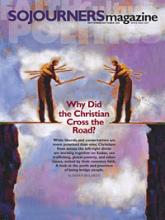From Jesus to Paul, the Christian community expanded from agrarian areas on the edges of Rome's reach to cities key to the empire. When reading Matthew, keep in mind that Herod Antipas ruled Galilee as a Roman protectorate. Locally, the Pharisees exercised dominant power in the synagogues, markets, and courts. This region's fertile lands provide the context for Jesus' vineyard parables, but remember that its many large villages lived under an occupation. Jesus contrasts that rule with the coming kingdom of God.
The good news is that reconciling "two or more gathered," forgiving 77 times, and inviting "both good and bad" to the wedding feast leads to a justice that restores relationships, shares the bounty, and redeems lives.
In Galilee, Jesus demonstrates a restorative justice that penetrates surface spirituality. He announces that there are tax collectors and prostitutes who will enter the kingdom of God ahead of respected religious and national leaders.
Perhaps these Galilean parables aren't so different from the large-scale dramas in this month's Exodus history and psalmist liturgy. Recovering the balance of power and the dignity of each person gives life and saving wholeness. What changes in Galilee is that God acts, through the person of Jesus, through a transformative justice that knows no end to forgiveness.
Robert Roth is a writer and social activist in East Lansing, Michigan.
September 4
Practicing Reconciliation
Exodus 12:1-14; Psalm 149; Romans 13:8-14; Matthew 18:15-20
Read the Full Article
